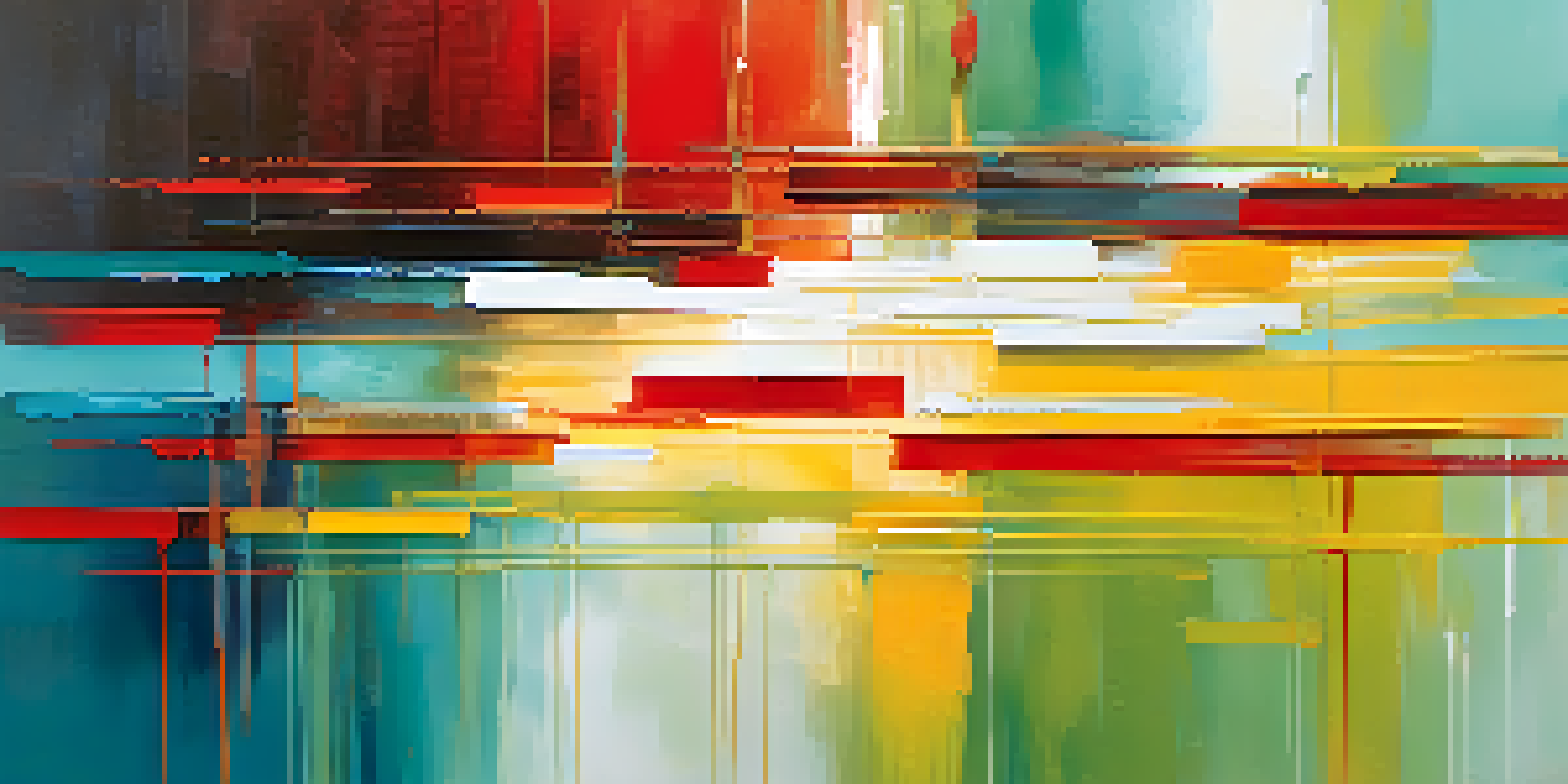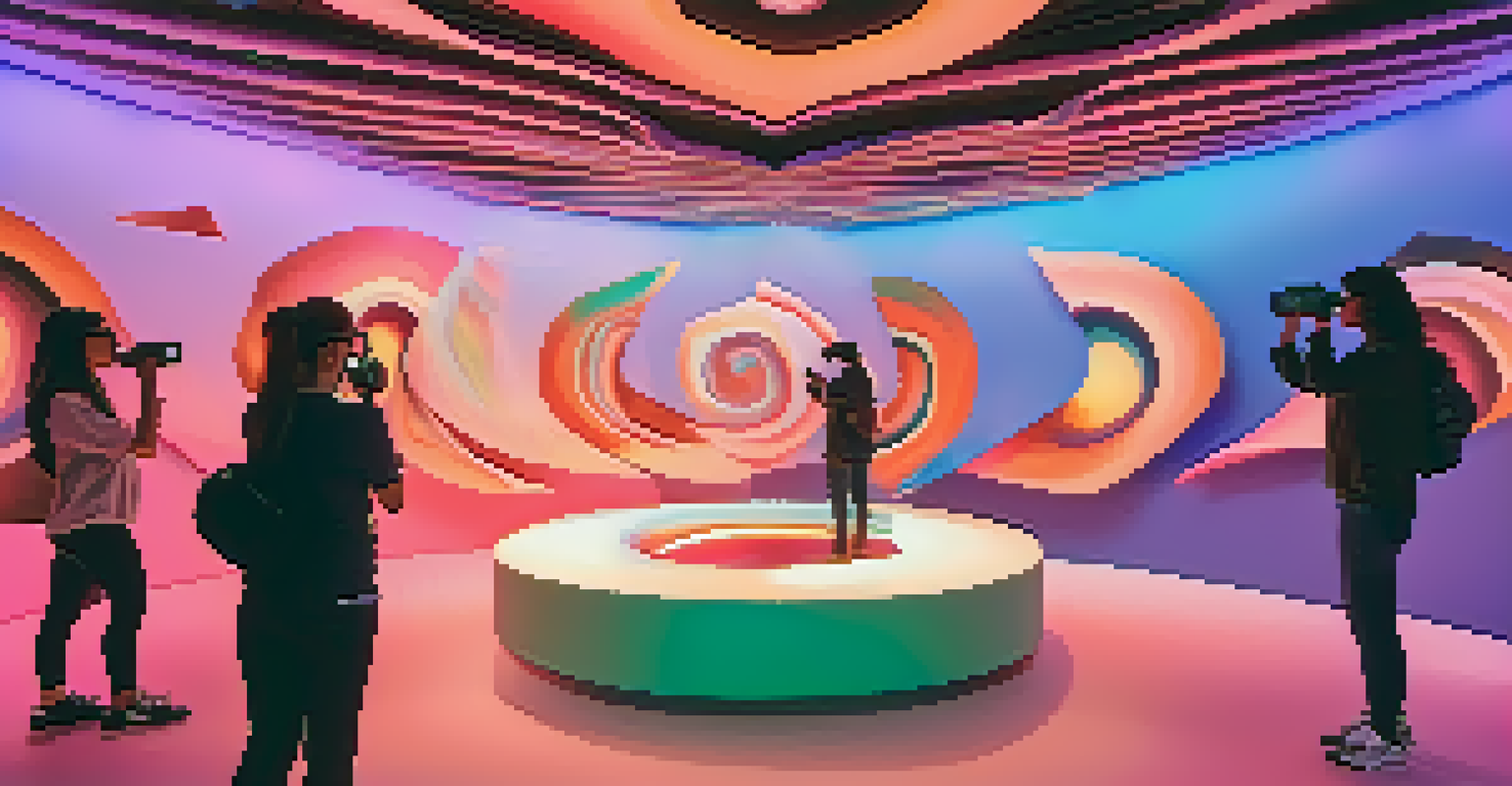Exploring the Impact of Color Theory in Experimental Painting

Understanding Color Theory: A Foundation for Artists
Color theory is the study of how colors interact and the emotions they evoke. It serves as a foundational tool for artists, helping them create visually appealing artwork. By understanding the color wheel, which includes primary, secondary, and tertiary colors, artists can mix and match colors more effectively.
Color is the keyboard, the eyes are the harmonies, the soul is the piano with many strings.
For instance, warm colors like red and yellow can create feelings of excitement and energy, while cool colors like blue and green often evoke calmness and tranquility. This emotional connection is crucial in experimental painting, where artists often push boundaries to convey unique messages.
Ultimately, a solid grasp of color theory allows artists to experiment with different palettes, enabling them to explore new avenues of creativity and expression. This understanding can lead to innovative works that resonate with viewers on a deeper level.
The Role of Color in Experimental Painting Styles
In experimental painting, artists often break from traditional techniques to explore new styles. Color plays a crucial role in this exploration, as it can dramatically alter the perception of a piece. For example, an artist might use a monochromatic palette to create a sense of harmony or a vibrant array of colors to invoke chaos.

Consider the works of abstract expressionists, who employed bold colors to convey their emotions and experiences. The use of color became a language of its own, allowing them to communicate complex feelings without relying on recognizable forms.
Color Theory Shapes Artistic Expression
A strong understanding of color theory empowers artists to create compelling artworks by effectively mixing colors and exploring emotional connections.
This flexibility encourages artists to think outside the box and challenge conventional norms. It opens up a world of possibilities, where color becomes an essential tool for experimentation and self-expression.
Color Psychology: The Emotional Impact of Colors
Color psychology is the study of how colors affect human behavior and emotions. In the realm of experimental painting, understanding this concept allows artists to make deliberate choices about their color palettes. For example, blue can evoke feelings of sadness, while yellow can inspire joy.
Colors are the smiles of nature.
Artists can use these emotional responses to guide their creative decisions. By intentionally selecting colors that align with the feelings they want to convey, they can create artworks that resonate more profoundly with their audience.
This connection between color and emotion is a powerful tool in experimental painting, as it helps artists communicate their vision and engage viewers on a more personal level.
Cultural Significance of Colors in Art
Colors carry different meanings across cultures, and this significance can greatly impact experimental painting. For instance, while white represents purity in Western cultures, it may symbolize mourning in some Eastern cultures. Artists must consider these cultural nuances when selecting colors for their work.
By incorporating culturally significant colors, artists can create pieces that resonate with specific audiences or provoke thought on a broader scale. This awareness enriches the narrative of their work and can lead to profound connections with viewers.
Cultural Context Influences Color Use
Artists must consider the cultural significance of colors, as meanings can vary widely across different societies, enriching their narratives.
Ultimately, understanding the cultural context of colors allows artists to expand their creative horizons and explore themes that reflect diverse perspectives.
Techniques for Experimenting with Color in Painting
Experimental painting invites artists to try new techniques, especially when it comes to color application. Techniques such as glazing, where transparent layers of color are applied, can create depth and complexity in a piece. This method allows colors to interact in unexpected ways, resulting in vibrant and dynamic artworks.
Another approach is the use of palette knives or unconventional tools that create unique textures and patterns. These methods encourage spontaneity, allowing artists to discover new color combinations and effects that they may not have considered otherwise.
By embracing these experimental techniques, artists can push the boundaries of traditional painting and develop their own distinctive styles, all while exploring the emotional and aesthetic impact of color.
Combining Color Theory with Personal Style
Every artist has a unique voice, and combining that personal style with color theory can lead to powerful results. Understanding the emotional weight of colors helps artists to express their individuality more effectively. For instance, an artist might prefer a muted palette that reflects their introspective nature, while another might choose vibrant colors to showcase their exuberance.
This fusion of theory and personal expression can transform an artwork into a reflection of the artist's identity. It allows for a deeper connection between the artist and their audience, as viewers can sense the personal narrative woven into the colors.
Innovation in Color Through Technology
Emerging digital tools and immersive technologies are transforming how artists experiment with color, opening up new avenues for creativity and interaction.
Ultimately, merging color theory with one's unique style can elevate a piece, making it not just a visual experience but an emotional journey.
The Future of Color in Experimental Art
As technology continues to evolve, the future of color in experimental art looks promising. Digital tools offer artists new ways to experiment with color, allowing for instant adjustments and endless possibilities. This shift opens doors to innovative techniques that can challenge traditional notions of color and art.
Moreover, the rise of virtual reality and augmented reality in art presents opportunities for immersive experiences where color can transcend the canvas. Artists can create environments where viewers can interact with colors in real-time, deepening their engagement.

As artists explore these new frontiers, the impact of color theory will likely continue to evolve, inspiring future generations of creators to experiment and innovate.